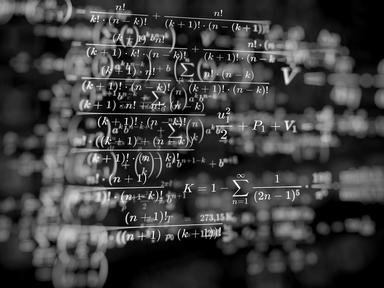Quiz Answer Key and Fun Facts
1. There are infinitely many primes.
2. There exists a set of all sets which do not contain themselves.
3. If P(x|y) = P(x)*P(y), then x and y are independent of each other.
Note: P(x|y) is the probability of x given that y is true.
4. Let X be a continuous random variable. If so, then it is possible for X to be equal to some real value a.
5. Let triangle ABC be a right triangle with sides whose lengths are integers. If so, then it is possible for both legs of the triangle to have lengths that are odd numbers.
6. Let Q(n) be some statement that is based on the value of n. Assume that Q(0) is true, Q(1001) is false, and that if Q(n) is true, then so is Q(n+2). With this information, we know whether or not Q(n) is true for all integer values of n between 1 and 1000.
7. In a group of 50 people, the probability that at least 2 people have the same birthday is around 0.5.
8. Let triangle ABC be a right triangle with sides whose lengths are integers. If so, then it is not possible for the length of one leg to be a multiple of the length of the other leg.
9. If a number ends in the digits 111 in base 10, it also ends with the digits 111 in base 2.
10. There exists an integer k > 1 such that the limit as n approaches infinity of (e^n)/(n^k) is a constant.
Source: Author
bfguitarhero
This quiz was reviewed by FunTrivia editor
crisw before going online.
Any errors found in FunTrivia content are routinely corrected through our feedback system.
